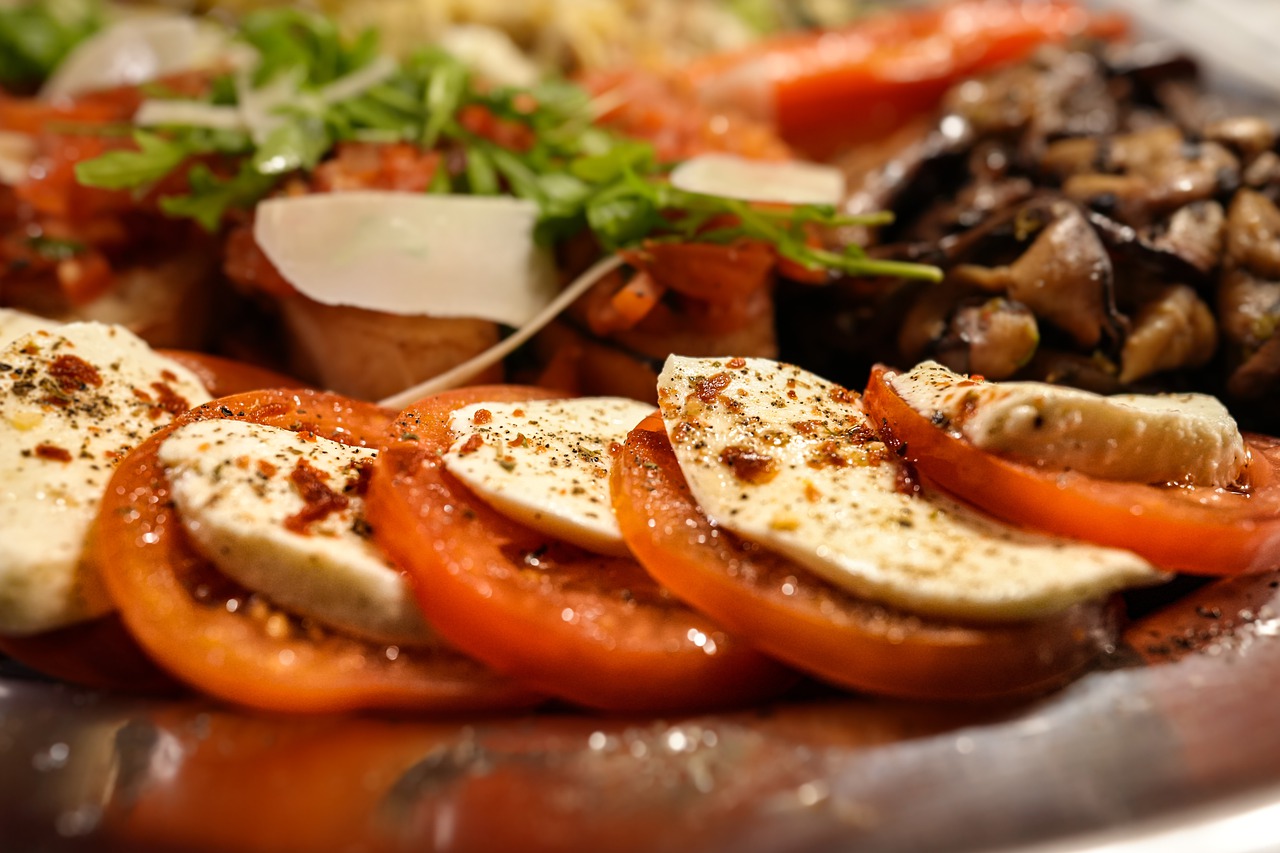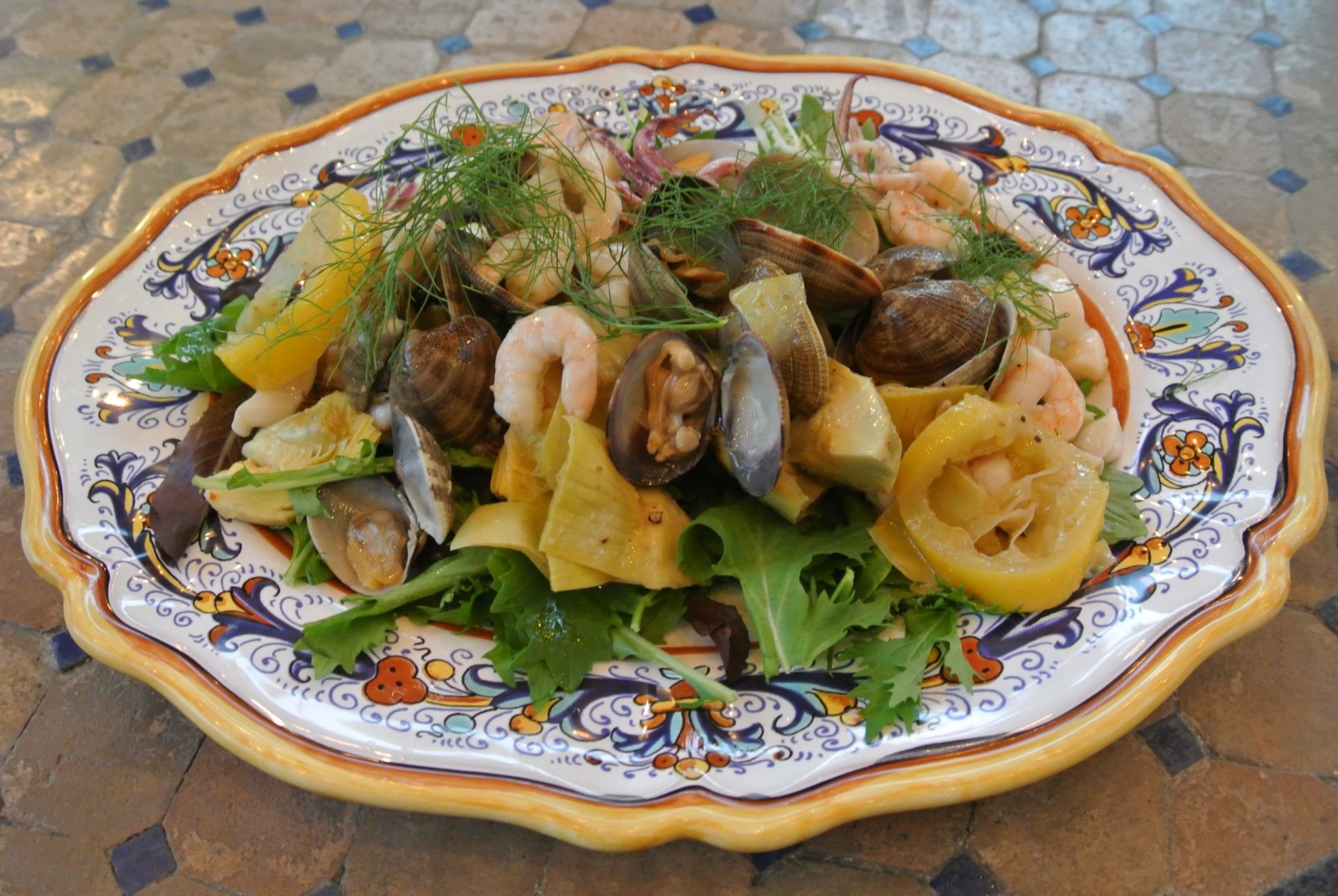Southern Italian food is a captivating tapestry of flavors, traditions, and culinary artistry. From the sun-kissed shores of Sicily to the rolling hills of Campania, each region offers a unique symphony of tastes and aromas that tell a captivating story of history, culture, and passion.
This gastronomic journey will delve into the distinctive characteristics, regional variations, and traditional ingredients that define Southern Italian cuisine. We will explore the cooking methods that bring these flavors to life and uncover the cultural significance of food in this vibrant region.
Culinary Characteristics
Southern Italian cuisine, known for its vibrant flavors and hearty dishes, is a testament to the region’s rich history and diverse geography. The cuisine is characterized by a generous use of fresh, local ingredients, such as tomatoes, olives, garlic, and basil, which are often combined to create robust and flavorful dishes.
One of the most distinctive features of Southern Italian cuisine is its use of tomatoes. Introduced to the region in the 16th century, tomatoes have become an integral part of many dishes, including the iconic pizza and pasta sauces. Other key ingredients include olive oil, which is used both as a cooking medium and a condiment, and garlic, which adds a pungent and aromatic flavor to many dishes.
Signature Dishes
Some of the most famous signature dishes of Southern Italy include:
- Pizza:A flatbread topped with tomato sauce, cheese, and various other ingredients, pizza is a beloved dish throughout the world. It originated in Naples in the 19th century and has since become a symbol of Italian cuisine.
- Pasta:Pasta is another staple of Southern Italian cuisine. Made from durum wheat flour, pasta can be served with a variety of sauces, including tomato sauce, pesto, and Alfredo sauce.
- Risotto:A creamy rice dish cooked in broth, risotto is often made with seafood, vegetables, or meat. It is a popular dish in Northern Italy but is also enjoyed in the South.
Regional Influences
The culinary traditions of Southern Italy have been influenced by a variety of factors, including the region’s geography and history.
The region’s long coastline has led to a strong emphasis on seafood in Southern Italian cuisine. Dishes such as grilled fish, seafood stews, and pasta with seafood are common throughout the region.
Southern Italy’s history of being ruled by different empires, including the Greeks, Romans, and Arabs, has also influenced its cuisine. Greek influences can be seen in the use of olives and olive oil, while Roman influences can be seen in the use of pasta and cheese.
Arab influences can be seen in the use of spices and dried fruits.
Regional Variations
Southern Italy, a culinary melting pot, boasts diverse regional cuisines influenced by its geography, history, and cultural exchanges. From the sun-kissed shores of Campania to the rugged landscapes of Basilicata, each sub-region offers unique dishes, cooking techniques, and local specialties.
Campania
- Renowned for its use of fresh seafood, including mussels, clams, and anchovies.
- Famous dishes include pizza Margherita, spaghetti alle vongole, and baba au rhum.
- Known for its rich and flavorful tomato sauces, often made with San Marzano tomatoes.
- A variety of cheeses, including mozzarella di bufala, provolone, and pecorino romano, are produced in the region.
Puglia
- Cuisine characterized by simple, rustic dishes using local ingredients.
- Known for its orecchiette pasta, often served with cime di rapa (turnip greens).
- Other specialties include focaccia barese, a flatbread topped with tomatoes and olives, and taralli, savory breadsticks.
- A variety of seafood dishes, including mussels, oysters, and sea urchins, are popular.
Basilicata
- Cuisine influenced by its mountainous terrain and pastoral traditions.
- Known for its hearty dishes, such as lamb and pork stews, and pasta with meat sauces.
- Local specialties include peperoni cruschi (dried peppers), caciocavallo podolico (a semi-hard cheese), and lucanica (a spicy sausage).
- Wild mushrooms and truffles are also used in many dishes.
Calabria
- Cuisine characterized by its spicy flavors and use of local chili peppers.
- Famous dishes include ‘nduja (a spreadable sausage), soppressata (a dry sausage), and pasta with anchovies and chili peppers.
- Seafood is also prevalent, with dishes such as swordfish involtini and grilled octopus.
- Bergamot oranges, grown in the region, are used in desserts and liqueurs.
Sicily
- Cuisine influenced by its diverse history and cultural exchanges.
- Known for its street food, including arancini (rice balls), cannoli (pastry shells filled with sweet ricotta), and cassata (a ricotta cake).
- Other specialties include pasta alla Norma (with eggplant and ricotta), caponata (a sweet and sour vegetable dish), and granita (a frozen dessert).
- A variety of wines, including Marsala and Nero d’Avola, are produced in the region.
Comparative Table of Culinary Characteristics
| Region | Seafood | Tomato Sauce | Cheese | Local Specialties ||—|—|—|—|—|| Campania | Abundant | Rich and flavorful | Mozzarella di bufala | Pizza Margherita, baba au rhum || Puglia | Seafood | Simple, rustic | Pecorino romano | Orecchiette pasta, focaccia barese || Basilicata | Hearty | Meat-based | Caciocavallo podolico | Lamb and pork stews, peperoni cruschi || Calabria | Spicy | Chili peppers | ‘Nduja | Soppressata, pasta with anchovies and chili peppers || Sicily | Street food | Sweet and sour | Ricotta | Arancini, cannoli, caponata |
Traditional Ingredients

Southern Italian cooking is known for its reliance on fresh, local ingredients that reflect the region’s rich agricultural heritage. These ingredients form the foundation of authentic dishes, adding flavor and depth to every meal.
The following ingredients are essential to Southern Italian cuisine:
Tomatoes
- Tomatoes are a staple in Southern Italian cooking, used in sauces, soups, stews, and salads.
- Their bright acidity and juicy texture add a vibrant flavor to dishes.
- Example: Spaghetti alla Puttanesca, a classic pasta dish featuring tomatoes, garlic, anchovies, and capers.
Olive Oil
- Olive oil is the primary cooking fat in Southern Italy, adding richness and flavor to dishes.
- Its fruity and peppery notes enhance the taste of ingredients without overpowering them.
- Example: Bruschetta, a simple appetizer of toasted bread topped with olive oil, tomatoes, and basil.
Garlic
- Garlic is a ubiquitous ingredient in Southern Italian cooking, adding a pungent and aromatic flavor.
- It is often used in combination with olive oil to create a flavorful base for dishes.
- Example: Aglio e Olio, a pasta dish featuring garlic, olive oil, and chili peppers.
Seafood
- Southern Italy’s proximity to the Mediterranean Sea provides access to a variety of fresh seafood.
- Fish, shellfish, and crustaceans are commonly used in dishes, adding a briny and umami flavor.
- Example: Zuppa di Pesce, a seafood stew featuring a variety of fish, shellfish, and vegetables.
Herbs
- Herbs such as basil, oregano, and rosemary are widely used in Southern Italian cooking, adding freshness and aroma.
- They are often used in combination to create complex and flavorful herb blends.
- Example: Pesto, a sauce made from basil, pine nuts, garlic, and olive oil.
Cooking Methods

Southern Italian cuisine employs a diverse array of cooking techniques, each contributing unique flavors and textures to its culinary creations. These methods include grilling, roasting, braising, and stewing, all of which have been passed down through generations.
Grilling
Grilling involves cooking food directly over a heat source, such as charcoal or wood. This method imparts a smoky flavor and creates a crispy exterior while maintaining a tender interior. Popular grilled dishes include grilled vegetables, seafood, and meats.
Roasting, Southern italian food
Roasting entails cooking food in an oven at high temperatures. This technique allows the food to brown and develop a flavorful crust while retaining its moisture. Roasted dishes often feature meats, vegetables, and poultry.
Braising
Braising involves browning food in a pan and then simmering it slowly in a flavorful liquid. This method tenderizes tough cuts of meat and creates rich, savory sauces. Common braised dishes include osso buco and beef stew.
Stewing
Stewing is a slow-cooking method where food is simmered in a liquid until tender. This technique infuses the food with flavors from the liquid and creates hearty and comforting dishes. Popular stews include minestrone and ragù.
Cultural Significance: Southern Italian Food
Food is deeply embedded in the cultural fabric of Southern Italy, where it transcends mere sustenance and becomes an integral part of life. The region’s culinary traditions are deeply intertwined with its rich history, geography, and social customs.
Family meals are a cornerstone of Southern Italian culture, serving as a time for families to gather, share stories, and connect over delicious food. Communal dining is also prevalent, with extended families and friends coming together for special occasions and celebrations.
These gatherings often feature elaborate feasts that showcase the region’s culinary prowess.
Food Festivals
Food festivals are a vibrant expression of Southern Italy’s culinary culture. These events celebrate the region’s diverse cuisine, with local chefs and vendors showcasing their specialties. Festivals often include cooking demonstrations, competitions, and live music, creating a festive and convivial atmosphere.
Food is also inextricably linked to traditions and customs in Southern Italy. Specific dishes are associated with religious holidays, seasonal celebrations, and life events. For example, the “Feast of the Seven Fishes” is a traditional Christmas Eve meal featuring seafood dishes, while “la parmigiana di melanzane” (eggplant Parmesan) is a staple at weddings and other special occasions.
Modern Interpretations
Southern Italian cuisine is experiencing a resurgence, with contemporary chefs and restaurants reimagining traditional dishes while honoring their heritage.
Innovative chefs like Gennaro Esposito and Nino Di Costanzo are blending traditional flavors with modern techniques, creating dishes that are both familiar and surprising.
Fusion of Tradition and Modernity
The fusion of traditional and modern elements is a defining characteristic of contemporary Southern Italian cooking. Chefs are experimenting with new ingredients and cooking methods while staying true to the region’s culinary traditions.
- Traditional ingredients like tomatoes, eggplant, and mozzarella are combined with unexpected flavors like saffron, anchovies, and citrus.
- Classic dishes like pizza and pasta are reimagined with contemporary twists, such as sourdough crusts and gourmet toppings.
- Modern techniques like sous vide and molecular gastronomy are used to enhance flavors and textures, while preserving the essence of traditional dishes.
Q&A
What are the key ingredients in Southern Italian cuisine?
Fresh vegetables, such as tomatoes, eggplant, zucchini, and peppers; olive oil; garlic; herbs, such as basil, oregano, and rosemary; and seafood.
What are some signature dishes of Southern Italy?
Pizza, pasta dishes like spaghetti al pomodoro and orecchiette con cime di rapa, seafood dishes like frittura di pesce and grilled octopus, and desserts like cannoli and sfogliatelle.
How has the geography of Southern Italy influenced its cuisine?
The region’s proximity to the sea has led to a heavy reliance on seafood, while the fertile soil has provided an abundance of fresh produce.